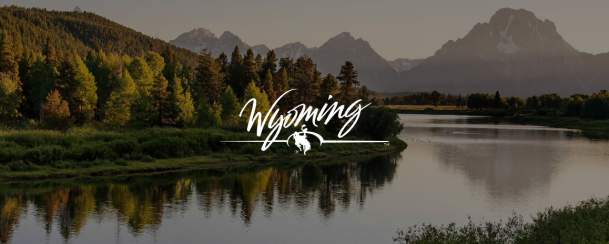Your Wyoming vacation isn’t just about seeing, it’s about doing. Visitors are invited to get off the road and enjoy the unbeaten path. Here’s some advice from Wyoming State Parks to help keep trails safe and enjoyable for everyone who uses them.
General Rules for All Users
- Stay on existing trails.
- Don’t short-cut switchbacks.
- Avoid very wet and muddy conditions.
- Do not spook horses.
- Move to the lower side of the trail if possible.
- Know the local trail rules, regulations and special concerns of the area.
- Obey gate closures and signs.
- Pass others with care.
- Let others know you are about to pass.
- Respect the rights of others, regardless of their mode, speed or skill level.
- Do not block the trail.
- Keep the trail clean.
- Slower traffic has right-of-way.
- Keep right, except when passing.
- Get owners’ permission on private land.
- Do not disturb the wildlife.
Rules for Multi-use Trails
- Ride, skate and walk with the flow of traffic, as far to the right side of the trail as practical.
- Ride, skate or walk single file. Don’t block the trail.
- Groups should be in a single file when other trail users are present and should never use more than one-half of the trail to allow for the flow of traffic.
- Control your speed! Obey speed regulations.
- Slow down when approaching or overtaking other trail users.
Who Yields the Trail?
- Before passing another trail user, be courteous and make your approach known well in advance. A friendly greeting, “Hello, passing on your left,” or ringing a bell is considerate and works well.
- All trail users (bicyclists, skaters, walkers or others) yield to equestrians.
- Bicyclists and skaters yield to walkers.
- Bicyclists yield to skaters.
- Downhill users yield to uphill users.
- Faster users yield slower users.
- Never spook animals.
- Leave no trace; plan ahead.
- Stay on existing trails and don’t create any new ones.
- Be sure to pack out at least as much as you can pack in.
- Always wear a helmet, drink plenty of water, and carry gear for changing weather conditions.
Equestrians
- Let other users know when it’s safe to pass your horse.
- Leave gates as you find them.
- Do not ride on a muddy trail.
- Slow to a walk when approaching others.
Motorized Vehicles
- Travel and recreate with minimum impact.
- Travel only where motorized vehicles are permitted.
- Stay out of wilderness areas.
- Respect the environment and the rights of others.
- Educate yourself, plan and prepare before you go.
- Allow for future use of the outdoors, leave it better than you found it.
- Carry out your trash.
- Always properly maintain your muffler to keep noise at a minimum.
- Trails can be wet and muddy both early and late in the season. Save wet trails for dryer times.
Bicyclists
- Ride slowly single file when passing or when being passed.
- Yield the right-of-way to all other users.
- Maintain traction; skidding causes damage to the trail.
- Do not ride in the mud or on trails where ruts are created by your tires.
- Stay out of designated wilderness.
- Control your bike.
- Be ready to stop.
- Do not ride around water bars.
- Downhill riders yield to uphill riders.
Safety Tips for ATV Users
- Wear a helmet and eye protection at all times and other protective clothing suitable to the environment.
- Do not carry passengers on your ATV.
- Do not let young or inexperienced riders operate ATVs without training and supervision.
- Do not use alcohol or other drugs when you ride.
- Learn proper riding skills from an instructor or qualified rider and practice such skills before riding.
- Always maintain a safe distance between riders. Tailgating can lead to collisions and injuries.
- Ride with others and let someone know where you are riding. Never ride alone.
- Obey the laws.
- Stay on trails designated for ATVs.
- Be informed of local weather conditions and dress and equip yourself appropriately.
- Know the area you are riding in. Be aware of its potential hazards.
- Always ride at a safe and responsible speed. Know your abilities and don’t exceed those levels.
- Make sure your equipment is in top working order; check before heading out.
- Carry a map of the trail or area you intend to travel.
- Use common sense.

